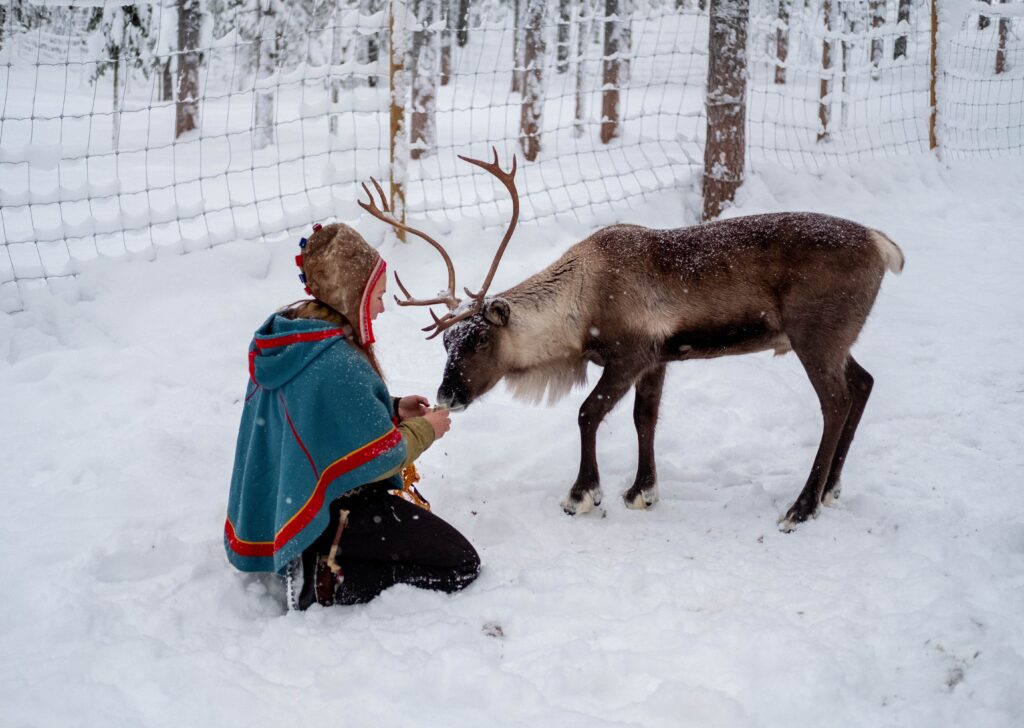The Sami tribe, one of Europe’s oldest indigenous communities, is facing challenges to preserve their way of life.
In the chilly northern reaches of Europe lies a land without borders, known as Sápmi. But don’t be fooled by its lack of national delineation; this region is teeming with a unique language and culture that belong solely to the Sami people. With their own distinct traditions and way of life, the Sami have carved out a vibrant community in this stunningly beautiful corner of the world. Interestingly, the Sápmi region covers parts of Norway, Sweden, Finland, and the Kola Peninsula in Russia. In times past, this land was known as Lapland, but the Sámi people have rebranded it with a more authentic name, like Northern Sámi Sápmi.
The Sami people have an incredible linguistic and cultural heritage, boasting their own unique Sami languages that belong to the fascinating Uralic language family. Their ancestors have engaged in various ways of life over the centuries, such as fishing, fur trapping, and sheep herding, but their most captivating livelihood is undoubtedly semi-nomadic reindeer herding.
Reindeer herding is a vital aspect of the Sami way of life, providing the community with meat, fur, and transportation. As of 2007, approximately 10% of the Sami population was connected to reindeer herding, with about 2,800 Sami people fully engaged in the practice in Norway. In some Nordic regions, reindeer herding is exclusively reserved for the Sami, due to cultural, environmental, and political reasons.
Discover the Vibrant Culture and Traditions of the Sami Tribe

The Sami people are known for their resourcefulness and creativity in crafting tools and crafts from bones and transforming leather into useful items like shoes, clothing, and cushions. They have a unique culinary tradition where the entire reindeer, including its offal, is consumed, and a special dish called bidos, a reindeer stew is served on occasions such as weddings. In fact, at a traditional Sámi wedding, which can last for several days, over a thousand guests are typically present, and the delicious bidos is always on the menu.
Sámi handicrafts are a significant part of their cultural heritage, with artisans creating a wide range of items that showcase their skills and traditions. From beaded embroidery to wood and bone carvings, Sámi handicrafts are a testament to their rich artistic legacy. The traditional Sámi outfit, the kofte, is also an integral part of Sámi handicrafts, featuring bright colors and adorned with silver brooches.
One of their unique traditions is the art of joik, a form of song that dates back to ancient times. Joiks are often inspired by nature, animals, and people, and receiving a joik about oneself is considered a remarkable honor in the Sámi community. This traditional music form has stood the test of time and is being reinvented by younger artists who are blending it with contemporary genres like rock and rap.
Apart from their musical traditions, the Sámi people also have a deep understanding of the healing powers of nature. They use herbs and berries, such as juniper berries, willow tree bark, and birch leaf bark, to cure various ailments.
The Sami people have a fascinating belief system that is rooted in the natural world. They believed that nature had a soul and that spirits governed the essential locations in nature. Certain places were considered sacred and used as sacrificial sites. The Sami’s gods were associated with hunting, fishing, and the wind; and shamanism played a significant role in their religious practices. The Sami shaman, also known as the Noaiden, was a religious and social leader who used a drum called a ‘runebojmme’ as a crucial tool.
Another interesting fact about the Sami tribe is that they lived nomadically, and their portable accommodations were essential for their survival. They used turf huts called ‘gammer’ and tent-like structures called lavvus that could be easily moved according to the seasons. These dwellings had a central campfire and openings at the top for smoke to escape.
The Sami people have their own flag, and their own national day, which is celebrated on February 6 with festivities held jointly by the Sami communities in Norway, Sweden, Finland, and Russia. In Norway, the Sámi have their own parliament, Sametinget, which is responsible for ensuring the political representation and participation of the Sami population. The Sami culture is a vital part of European heritage, and it is a testament to the resilience of this remarkable tribe.
The Sami Tribe Courageously Facing Modern Challenges

As the world continues to progress, the Sami people find themselves struggling to preserve their centuries-old culture and way of life. Despite their rich history and vibrant traditions, the Sami are facing significant challenges in modern times.
One of the most pressing concerns is the negative impact of extractive industries on their livelihoods and culture. The Norwegian Mining Law and the Swedish Minerals Law have raised serious questions about the States’ ability to protect and fulfill the human rights of the Sami community. These laws have left the Sami people feeling vulnerable and uncertain about the future of their land and resources.
Adding to their troubles, the indigenous tribe is also confronting racism in certain parts of Finland. While some may be friendly, many remain ignorant of Sami’s status as an indigenous community, just like the Native Americans, Aboriginals, and Māori people.
Despite these challenges, the Sami people continue to persevere and fight for their rights. They are working hard to preserve their traditions, pass on their knowledge to future generations, and ensure their voices are heard in the political arena. The Sami’s resilience and determination are a testament to their strength and courage in the face of modern-day challenges.
Ignite your personal growth journey with our handpicked collection of inspiring content. Sign up now for a life-changing dose of motivation and wellness.






